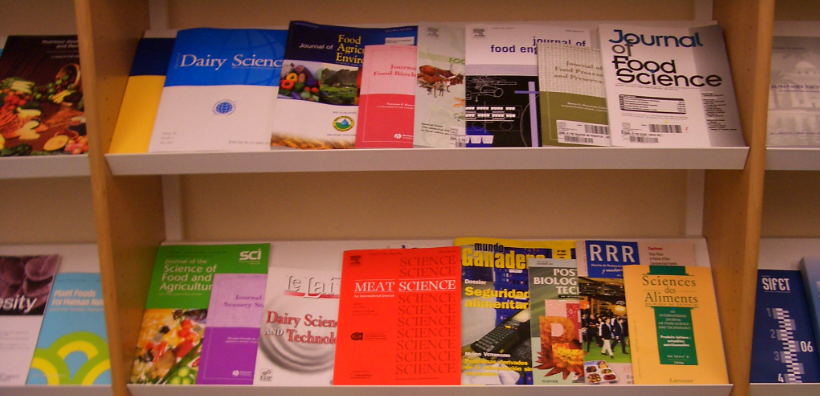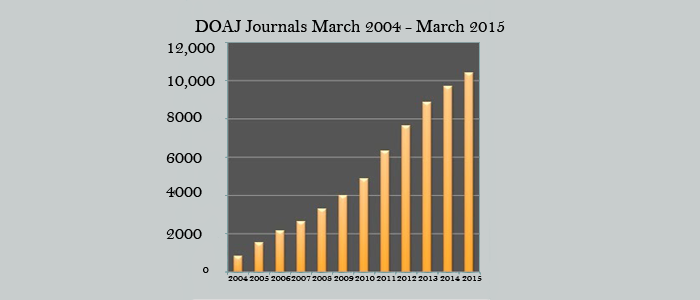Accelerating the transition to open access: with information about the NWO call for open access journals

Open Access Academic Journals Gaining Broad Readership
By Henderson| The publishing industry has been witnessing several technical and strategic changes over the years and Open Access publishing is one of the popular publication models that has received wider acknowledgement from the scientific community.
Open access publishing is producing 2 million articles annually and increasing global employment in the publishing industry. The present observed annual growth of article publishing through the Open Access model is at a rate of 7.5% to 10% every year.
With its 700+ open access journals and 3000+ International Conferences across the globe, OMICS Group is all set to provide open scientific information platforms, facilitating scientific knowledge sharing through the networked communities across the globe. As of now OMICS Group is getting 30+ million readers to its journals and conferences.
Open Access publication is gaining popularity due to increased online connectivity as it could reach millions of readers within no time, facilitating archiving, indexing, data mining, retrieving, and rapid distribution of research information. Hence, quick dissemination of valuable scientific innovations and knowledge transfer is taking place across the globe.
The number of researchers and authors trusting the Open Access publishing system is on the rise steadily by 5% each year and as many as 10 million authors are contributing through open access platforms now. No doubt, Open Access publication is going to remain as the most favorable publication model in the future as the subscription-based publishing and indexing sites are disappearing gradually with scholars and scientists getting relevant information sources from Open Access Journals.
OMICS Group is one of the pioneering Open Access publishers to rely on this philosophy, which assessed the power of sophisticated web technologies and its impact on publishing in those initial days. Today’s modern world is progressively looking at the Open Access providers for scientific information as they are transparent in providing equal access to all, facilitating faster development of research and publication in science, technology, medicine and commerce.
With 700+ open access journals, OMICS Group is a fertile global forum for discussion and knowledge sharing and OMICS Journals are attracting more than 15 Million unique visitors across the globe. These two sites are accounting for 40% journals out of 700 supported by the publisher. Moreover, 70% of the visitors to the sites comprise researchers from USA, India, UK, Japan, Germany, Italy, Australia, Brazil and South Korea, which have been serving as a global hub for scientific research. Approximately, 25% of visitors are flocking from the USA alone, and 20% of its visitors are from India.
OMICS journals encourage well-researched original articles, reviews, case studies, commentaries, technical notes and short communication for publication. Our team of over 75,000 well-built editorial board comprising veteran and accomplished scholars, researchers and scientists strives hard to provide the necessary inputs to enrich the submitted manuscripts. We follow a thorough, single-blind peer review of the manuscripts to maintain the best publication standards.
Dr Srinubabu Gedela announced, As of August 2016 OMICS Group achieved the milestone of 30 million readers. OMICS, iMedPub llc and Conference Series llc schedules 3000+ global conferences for 2016-2017. Association with more than 1000 global reputed academic, societal collaborators, OMICS Group is facilitating great networking, B2B2C opportunities, product launch and promotions through its events. Read more

The Directory of Open Access Journals (DOAJ), a leading open access journals’ index, has decided to tighten the standards for journals’ acceptance, in order to rule out dubious and inactive publishers.
Functioning on a voluntary basis, DOAJ is a community-curated list of peer-reviewed open access journals. In the past few years, the number of journals indexed at DOAJ grew almost exponentially, (see graph) from the initial 300 journals listed in 2003, to around 11,000 journals in the beginning of 2016.
Escaping predators
However, this growing trend flipped in the last six months, after the removal of around one-third of DOAJ’s indexed journals. The DOAJ started a ‘quality-check’ process in 2014, after facing harsh criticism for listing several predatory publishers– collecting article processing fees (APCs) while offering low quality journals, mostly without undergoing (rigorous) peer review processes.
Every publisher listed at the DOAJ was asked to resubmit their journals’ applications, which were then evaluated on the basis of more strict criteria. Lars Bjørnshauge, DOAJ’s managing director, explained to the Nature journal that publishers who failed to either resubmit or to provide reliable information about their mission, location and operation were excluded from the open access directory. The list of the excluded journals can now be found at the DOAJ’s website.
Open access on the rise
According to DOAJ, the number of open access journals is on the rise; every week, around 80 open access publishers apply for indexation. Yet, a large amount of those publishers fails to meet DOAJ’s quality criteria; only in the last two years, around 5,400 applications were rejected, mainly due to the lack of information regarding licensing rights, publication permission and editorial transparency.
Lars Bjørnshauge recognizes that the major challenge in the current open access landscape is no longer finding new open access publishers, but rather to keep the existing ones under a strict quality control. After excluding 3000 dubious open access journals from its index, DOAJ now plans to hire brand ambassadors to promote good publishing practices and assess new journals’ applications. Nature

